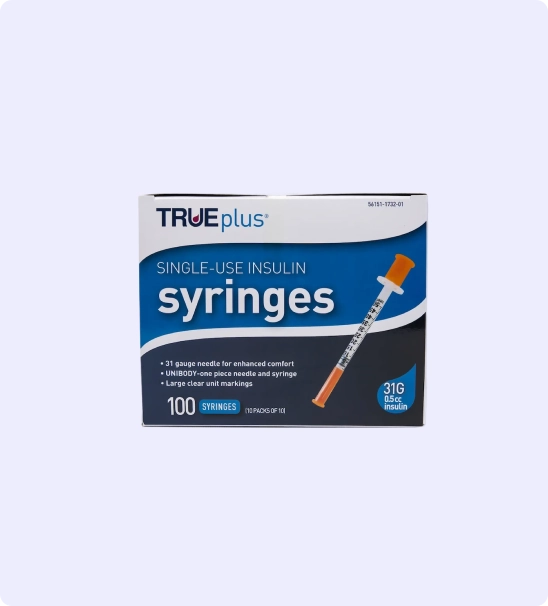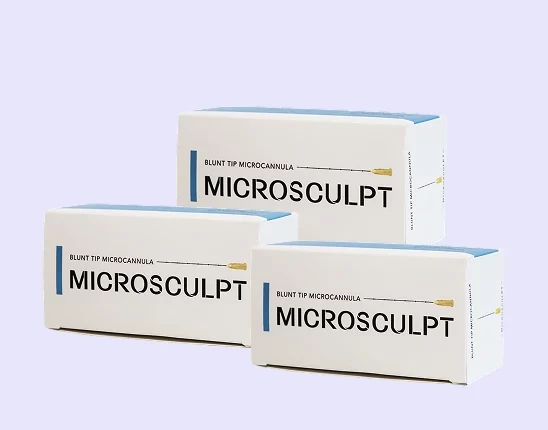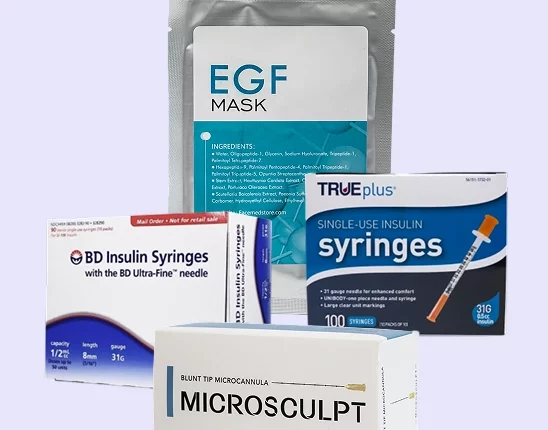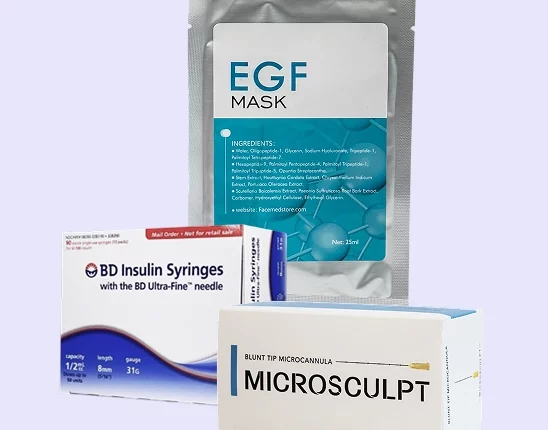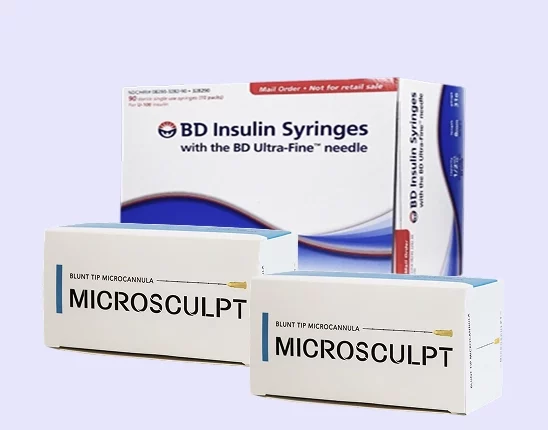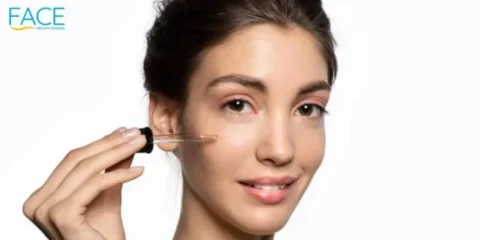Symmetrical, plump cheeks are the height of attractiveness, as they are a sign of youth, health, and vitality. When people age, we lose the volume in our cheeks, causing our faces to look sunken, hollow, or gaunt. The age related volume deficit in the face also causes our skin to fall and creates a sagging nasolabial fold at each corner of the mouth. In order to restore volume in the cheek area, cheek filler Juvederm Voluma is your best bet.
So what is the best Juvederm Voluma injection technique for lifting, contouring, and defining the face? In 2019, the FDA-approved the use of cannula injections for delivery of hyaluronic acid dermal filler Volume XC for the midface area. Experts agree that the microcannula method is ideal for the smooth injection of Voluma facial filler. Injecting with a cannula also helps injectors avoid damaging the blood vessels, so there is less bleeding, swelling, and bruising.
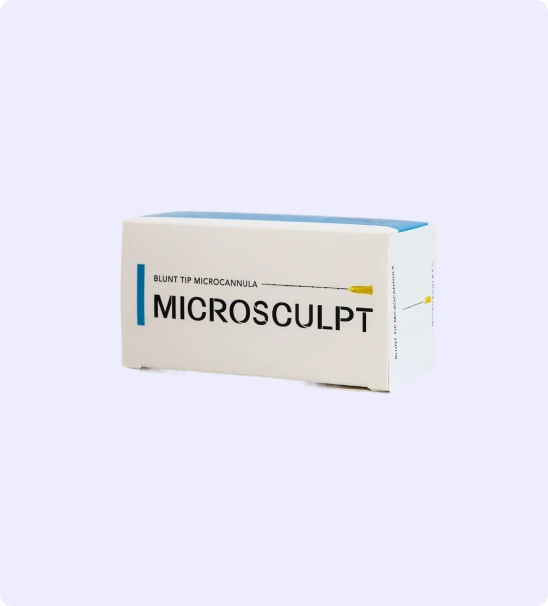
Injections Your Patients Will Love! Code “20OFF” Takes 20% off Your First Order!
Microcannulas are a tool that every great injector must master. Patients want quick results with no downtime. Our microcannulas are high quality and a fraction of the price of our competitors!
You can create an account here.
What Makes A Juvederm Voluma Different?
Juvederm Voluma XC (or simply, Voluma) is an injectable gel produced by Allergan, the makers of Botox and other cosmetic injectables. In 2013, Voluma was approved by the FDA as the first and only filler injection specifically indicated for treating age-related volume loss in cheeks and cheekbones in adults over the age of 21. Voluma is the perfect, non-surgical solution to getting a midface lift; with these Juvederm injections, you can undergo minimally invasive cheek augmentation to give a more youthful curve to your cheekbones.
Much like other popular dermal fillers such as Restylane, Juvederm Voluma is made of hyaluronic acid (HA). Hyaluronic acid is a naturally-occurring complex sugar in our bodies that stimulates collagen production and attracts water to the treatment site, gradually increasing facial volume in sunken cheeks over time. Another advantage of HA fillers is that they can easily be dissolved in case something goes wrong.
Vycross Technology
What makes Juvederm Voluma XC different from other Juvederm products is its long-lasting Vycross formulation. This special, cross-linking technology has intrinsic properties to keep the filler from spreading out. Unlike other fillers, Voluma is cohesive; it stays where you put it. Voluma also has a high G’ prime value, which means it’s firmer and won’t distend easily. With these combined qualities, Voluma is a thick, durable, and smooth gel that flows consistently — making it the ideal choice for sculpting, contouring, and lifting the cheeks.
Undergoing a Voluma treatment can unlock a new level of rejuvenation for your skin and cheekbones. For months after the injection, Voluma will fill in nasolabial folds and diminish tear trough areas, as the filler is designed to continually build upward for more lift and volume. The Voluma injectable filler also helps ease fine lines and facial wrinkles as well, giving each patient a tighter, younger appearance without looking like they got cheek implants.
The best part? Voluma XC results are instant and long-lasting. Depending on your facial anatomy, body chemistry, and the skill of your nurse injector, you can expect to enjoy a beautifully contoured face for up to two years.
Learn more: What Is the Longest Lasting Facial Filler?
Voluma Techniques for Cheek Augmentation

It takes a lot of time for a plastic surgeon to master the unique properties of the long-lasting Voluma filler. In order to give patients the best service, injectors would have to undergo special training to develop the artistic eye and technical skills necessary to administer this injectable treatment.
One of the latest plastic surgery developments for Juvederm Voluma XC is its method of delivery. The cannula technique allows Voluma experts to use a microcannula for the application of the product. Cannulas are small, long, and slightly flexible devices that look like needles, but are blunt on the end and attached to a syringe filled with the hyaluronic acid filler. For optimal treatment, many providers opt to use the TSK STERIGLIDE MicroCannula as their tool of choice.
What a Voluma Filler Session Is Like
The treatment begins when a topical numbing agent is applied to the skin approximately 15 minutes before the injections. The injector will make a few marks on the face to identify the injection site, paying close attention to symmetry and areas where blood vessels are located. As the cannula itself cannot penetrate the skin, a traditional needle will be used to create entry points along the injection site.
Once the pinhole or “tunnel” is created, the long cannula will be inserted and used to inject Voluma into relatively large areas of the cheek. With one cannula, a skilled cosmetic surgeon can sculpt the entire cheekbone, under-eye, and middle section of the face. And without multiple needle jabs, the injector is less likely to puncture a blood vessel; this reduces pain, bruising, and swelling in the injection site above the bone.
Although this technique is the best for patients who have a good degree of volume loss in the cheeks, it’s ultimately up to the injector to provide the best outcome. Providers should know how to measure how much filler is needed to keep results natural. Aside from the cheeks, the cannula method of Juvederm treatment can also be performed for lip augmentation or chin augmentation, albeit using a different filler product.
Preventing Complications With Voluma Hyaluronic Acid Filler Injections
Dermal filler injections are fun, but they’re still a cosmetic treatment patients introduce to their bodies. Even though they work well for a number of skin rejuvenation and anti-aging purposes, it’s important to manage HA fillers well to prevent unwanted side effects such as redness, tenderness, or lumps.
Pre-Treatment
Complications can be prevented well-ahead of the injection session, thanks to careful planning. A thorough knowledge of patient facial anatomy and the specific characteristics of each filler are necessary for keeping patients safe. It’s also good practice to manage patient expectations and keep them aware of potential risks.
1. Anatomy and medical history
Patients should be screened for any medical issues or contraindications such as multiple severe allergies, clotting disorders, vagal episodes, lidocaine allergies, allergies to gram positive bacteria, or a history of seizures. Patients should also be advised to avoid aspirin, blood thinners, fish oil supplements, and similar products at least two weeks before the procedure.
In terms of anatomy, skin thickness varies among facial areas and affects optimal injection depth. Excessive injection volume may negatively affect other blood vessels in the skin, so it’s important to keep Voluma application under control with the syringe. Providers should also analyze the cheeks well and assess the Ogee curve, the S-shaped curve that defines the cheekbone and mid-cheek hollow, to see exactly where the filler should be injected.
2. Filler choice
The appropriate depth of placement depends on the type of wrinkle filler used. As Juvederm Voluma is a medium-depth HA filler, it should be injected into the deeper dermis of the skin. As a rule of thumb, it’s better to err and inject on the deeper side, as injecting too deep can cause the results to “disappear”. On the other hand, injecting filler too superficially may produce nodules and an uneven surface. Keep in mind that the choice of filler will always affect the end result, so it’s crucial to understand how each filler works.
3. Patient expectations
Before proceeding with the treatment, it’s important to clarify patient goals and expectations. Patients should be well-informed of what the procedure is like and what kind of results they can expect. A provider should give patients the opportunity to identify their desired treatment areas and obtain informed consent that covers the discussion of potential side effects and aftercare. Pre-and post-procedure photographs should also be taken for documentation.
Post-Treatment
When the treatment is over, a patient should be monitored for any side effects or major complications. Aftercare can greatly minimize the risk of developing an infection or other concerns.
1. Side-effects
Severe complications can be avoided with the proper injection method and filler selection. However, even a seasoned injector may not be able to avoid minor side-effects such as bruising, swelling, or discomfort. Patients should also be advised to schedule treatment at least two weeks before a social event.
- Bruising: When the needle creates an entrance point for the cannula and syringe, bruises may appear. Tiny bruises are easily covered, but large, dark bruises may be visible and unsightly. This side-effect can be limited by pulling the skin taut in a well-lit room while injecting, so the provider can avoid visible blood vessels. A patient can undergo pulsed dye laser or IPL therapy to remove the bruising after 24 – 48 hours.
- Swelling: Swelling is a side effect from the inflammation of the injection itself, as well as the increased volume of filler. Providers should avoid certain facial areas where significant fluid attraction may occur, such as the periocular area.
- Discomfort: Minor pain and tenderness can be a source of patient anxiety, especially among first-time patients. An ice pack or numbing cream placed on the injection site prior to the treatment can help manage discomfort.
2. Aftercare
Patients should pay close attention to aftercare in order to minimize side effects and speed up healing. Some aftercare tips include:
- Applying ice on the skin for 30 – 60 minutes
- Avoiding self-massage, heat, alcohol, and intense exercise for at least 48 hours
- Applying a gel or ointment designed to heal bruises, as prescribed by the provider
In some cases, scheduling a follow-up appointment a week after the procedure can be helpful for additional sculpting. Lumps and bumps can still be massaged out of the skin during this period; any asymmetry or unevenness can be corrected by the injector. Worsening patient appearance may be resolved by injecting hyaluronidase to dissolve the filler.
3. Major complications
Providers should be concerned if red, painful, or tender nodules appear in the treatment site, as this may indicate an infection. Empiric oral antibiotics should be prescribed and the patient should be monitored for 48 hours.
The most severe complication that may occur would be vascular compromise, where the dermal filler injected into or around the artery reduces or stops blood flow. Symptoms of vascular compromise include extreme pain, geographic discoloration, and a dull persistent ache. The potential risk of vascular compromise can be minimized with the proper injection method, choice of injection site, or choice of filler.
FACE Med Store: The Best Source of Medical Supplies and Products
-
 Microcannula Multi-Gauge Precision Set
Microcannula Multi-Gauge Precision Set -
 Microcannula Complete Injection System
Microcannula Complete Injection System -
 Microcannula Size Progression Training Kit
Microcannula Size Progression Training Kit -
 Microcannula Professional Starter Kit
Microcannula Professional Starter Kit -
 Microcannula Volume Practice Pack
Microcannula Volume Practice Pack -
 23 gauge 50 mm (2 inch) Microcannulas
23 gauge 50 mm (2 inch) Microcannulas -
 22 Gauge 100 mm (4 inch) Microcannulas.
22 Gauge 100 mm (4 inch) Microcannulas. -
 27 Gauge 38 mm (1.5 inch) Microcannulas
27 Gauge 38 mm (1.5 inch) Microcannulas -
 25 Gauge 38 mm (1.5 inch) Microcannulas
25 Gauge 38 mm (1.5 inch) Microcannulas
Although using a blunt-tipped cannula is safer than a traditional, hypodermic needle, it takes extensive training and experience to master the technique. For certain procedures, the traditional needle injection technique may still be more effective.
If you’re looking for a one-stop-shop of cosmetic and wellness products for your practice, look no further than FACE Med Store. Since 2019, we have been dedicated to providing world-class products at a fraction of the typical cost. With our extensive stock of products and excellent customer service, you can choose among the best microcannulas, syringes, safety goggles, Hydraneedles, Plasma Pens, and more at affordable prices. Contact us today to learn about our offerings.
